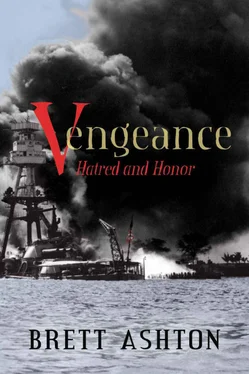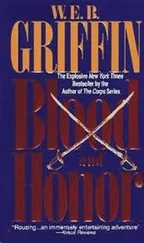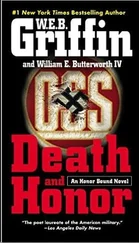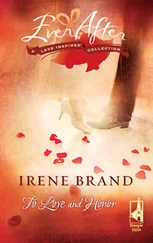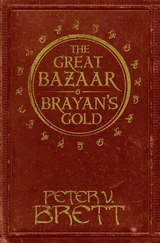As she rolled further, I could see past the masts and superstructure to see a large gathering of the crew on the starboard side climbing over onto the ship’s bottom and walking around the ship as if it were some sort of large log rolling in the water.
The forward and aft masts with their gunnery-spotting platforms struck the water with significant force. The aft one struck so close and with enough force to throw a wave of oily water over me, filling my nose and mouth. Almost instantly, I began to feel sick. Coughing and sputtering as I resurfaced, I struggled to regain my breath, the cut and bump on my head really beginning to pound. I could hear the masts and superstructure of the ship pushing into the harbor floor and breaking off as twenty-seven thousand tons of hull rolled over onto them. As the ship rolled, the starboard propeller came up out of the water, exposed to the air for the first time ever out of dry dock.
It was then an actual shock of tremendous force ripped through the harbor, like nothing I had ever felt before, and nothing I could imagine. For maybe only a couple of hundredths of a second, my body was compressed, as if in some large pressure chamber, and the air was knocked out of my lungs, causing me to swallow some more oily water. Then, just like that, it subsided again. I felt the heat burning on my face as a huge ball of fire rose above one of the ships at the other end of Battleship Row. It towered huge, orange and black, hundreds of feet above the struggling American ships. Carrying along with it large and small chunks of steel and debris, along with the human body parts of the crew of the USS Arizona , which rained down all over Pearl Harbor and Ford Island.
That’s the first time during the attack I actually thought about any ship other than my own. I looked down Battleship Row. The West Virginia was on fire and listing but not very dangerously. It looked like it was going to settle upright on the bottom. Apparently, they had achieved what I had hoped for on the Oklahoma .
The Maryland and Tennessee were protected from torpedo attack by the Oklahoma and West Virginia , but I could tell through the smoke that they were on fire as well.
I could only barely make out the Arizona ’s masts through the dense black smoke and fire which was being blown off of her by the westerly wind. Her forward mast was lying over at about forty-five degrees. Obviously, there was no longer any structure left underneath to support it.
At that time, I didn’t know much about the total damage done to the other ships or what their futures held. But one thing I could tell from right there in the water: in a war that was little more than ten minutes old, for the battleship Oklahoma, BB-37 and hundreds of her crew, the war was already over.
Fortunately, rescue from the oily waters of Pearl Harbor came quickly for me. The harbor began to fill with small boats even before the end of the first wave of the attack. I was trying to make my way back through the oily water to the hull of the overturned Oklahoma when one of them picked me up out of the water.
Not that I wanted to go back on the Okie . I just kind of thought at this point that anything to stand on would be better than nothing, and that was the shortest way to get out of the water from where I was. Swimming defenseless and injured in oily salt water was not something I wanted to do any longer than I had to.
The worst problem for me at the time was the total lack of cover in the water. The Japs were still attacking. Zeros were making strafing runs up and down Battleship Row, shooting through the smoke and fire at anything that moved. They were even making deliberate strafing runs at the larger groups of people in the water.
This really didn’t surprise me much at the time because I had seen numbers of reports on how the Japanese conducted their war in China. Rape and torture were common practice right out in the streets, frequently with the victim’s family right there, forced to watch.
They would make games of beheading people who just happened to be there at the time. I’d even seen pictures of them with prisoners tied to poles, using them for bayonet practice.
I kind of expected them to do what they were doing. They were an empire in the glee of an apparently unstoppable campaign to mercilessly control a large portion of the world. The consequences of defeat, or even the slightest thought of the possibility of defeat, had not entered their minds in the least, and they were behaving more as animals than men because of it. So they shot at us in the water wherever they could find the most of us. It worked out relatively well for me because I just happened to be mostly alone.
Bombs were falling and exploding faster than I could count.
I knew I wasn’t bleeding badly enough to be in immediate danger, but still, I thought some stitches and pressure were in order. The cut on my head as well as my side had bled considerably, and I was beginning to feel cold and faint. The oil and water I had inadvertently swallowed were making me quite sick, and I vomited up the eggs, bacon, and coffee that were served to me by an ensign who may not even be alive anymore.
The pain of the cut on my side, agitated by the salt water and vomiting, was rapidly becoming unbearable.
As I was pulled from the water, I looked at the overturned hull of my ship and wondered how many of the crew, some of them close friends of mine, were still trapped inside. I couldn’t even imagine what it must have been like for them. Being trapped in an overturned ship, in the dark, and wondering if rescue would ever come, or if escape was even possible, was something I was glad I was able to avoid.
It was that line of thinking that started me down the path of, “I’m going to kill every Jap I get the chance to, without exception.”
Once inside the boat, struggling against the almost continuous urge to vomit, I untied the ankles of my trousers and put them and my shoes back on. Then I turned my attention to the cut on my side. As expected, it was mostly a superficial cut, but it still needed some attention. I removed the belt from my pants and my T-shirt and used them as a makeshift compress for the cut on my side.
I asked one of the crewmen in the boat to look at the cut on my forehead. He said it was about two inches long and right to the bone. I used my pocket knife, which fortunately had not fallen out of my pocket, to cut a slice off of my khaki shirt and tied it tightly around my head to hold back the bleeding. The oily salt water sure did hurt directly against my wounds, but hopefully my temporary first aid would keep me from losing much more blood.
The boat that picked me up was almost full at that point. A few of us in it were injured, none severely, so we started to make our way around the bow of the Oklahoma and Maryland to put down on Ford Island. We pulled two more sailors out of the water on the way but passed several who were obviously dead. We left them, preferring to rescue anybody who was still living.
The harbor water was already littered with debris of every sort, including human body parts, the memory of which still haunts me to this day. My desire to pay back the Japanese for the death and destruction was growing at such an incredible rate that I could feel the emotion, the sheer anger, pounding in my chest. Yet I felt totally helpless, like a victim, with absolutely no way to return fire of any kind.
A large number of the Oklahoma crew were on the overturned hull as we passed but not anywhere near all of them. I guessed most went off of the starboard side to the Maryland or into the water on the starboard side of the ship. Some were certainly dead or still trapped inside of the ship. My anger could no longer be contained, so with nothing else I could do, I just kept saying out loud over and over again, “Goddamned Japs. I’m going to kill them all when I get the chance.” And that became my purpose, which I used to fuel my grim determination to survive the attack.
Читать дальше
